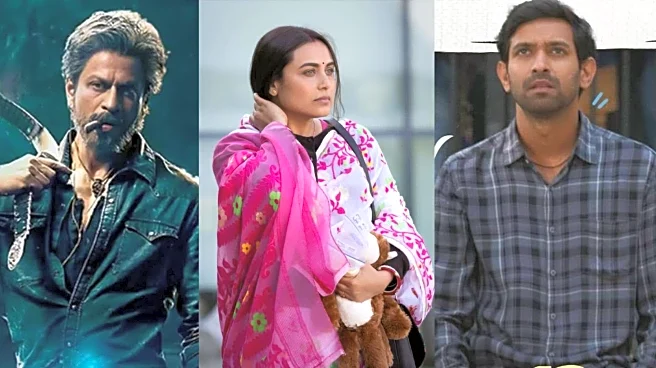God made man in his own image and in his image did man make God. Satyajit Ray’s 1970 film Devi (1960) begins with this very cycle of creation - a goddess chiseled from clay, transfigured into the divine, and finally surrendered to the river, dissolving back into the elements from which she was born. In Devi, Ray delivered one of Indian cinema’s most haunting exploration of faith, gender and delusion. Set in the rural Bengal of the 19th century, Ray’s Devi chronicles the psychological, spiritual and emotional unravelling of a young woman - Doyamoyee - who is believed to be an incarnation of the divine feminine - Kali. However, Devi is not that simple. Beneath the seemingly simple premise lies an intricate tale seeped in cultural and religious
traditions of the feminine divine and perhaps - the damned. More than a cinematic device within the narrative, the invocation of Durga, and Kali, serves as a lens through which Ray offers a scathing criticism of blind faith, patriarchy and the tragic dehumanisation of women, cloaked in reverence. Ray’s fusion of Durga’s imagery with cinematic language, sees the transformation of the Devi into a subtle yet scathing indictment of religiosity and its impact on a person’s agency.
Devi, Durga Puja And Bengal’s Cultural Backdrop
In Bengal, Durga Puja is more than a festival. A socio-cultural phenomenon, which is celebrated with grandeur and fervour, the festival marks Durga’s homecoming - to her maternal home, her children in tow. And while her iconography is that of the fierce mother who descends to Earth to vanquish evil, at its heart lies the paradoxical imagery of power and compassion - of destruction and motherhood.
Also Read: Ray And Durga: The Goddess And The Girl In Pather Panchali In
Devi, Satyajit Ray uses this powerful backdrop both as a setting and a metaphorical emotional undercurrent.
While the direct depiction of Durga Puja in the film starring Sharmila Tagore, Soumitra Chatterjee and Chabi Biswas is brief, it is imbued with the spiritual core of the festivities. The idea of a mortal woman of flesh and blood embodying the divine mirrors the mythic narrative of Durga descending into the sphere of humans. The festival, through the lens of Ray, evolves into a conceptual motif - felt in the iconography and psychological landscape of the characters.
Feminine Divine And Mortal Woman In Devi
Ray’s protagonist Doyamoyee (Sharmila Tagore) is a 17-year-old bride living in her in-laws’ zamindari household. Her father-in-law – Kalikinkar Choudhury (Chabi Biswas) – a devout follower of Kali – has a dream in which Doyamoyee appears to him as the goddess. He proclaims her a living deity. The household, and eventually the village accepts her is an embodiment of divinity.
Doyamoyee’s transformation into a goddess mirrors the elevation of the ordinary into the divine during Durga Puja. Clay idols are imbued with the sacred during the festival and Ray plays on this concept both visually and symbolically. Doyamoyee – previously silent and dutiful – is elevated to the station of a God. She is made to sit on a platform, worshipped, garlanded and feared. Yet Ray does not simply observe – he critiques. He interrogates.
Through the lens of Doyamoyee, he questions the societal impulse to worship women as goddess while denying them autonomy as humans. Doyamoyee, once a girl with her own laughter, fears and affection is consumed by the imposter role thrust on her. The Goddess becomes her cage and in her elevation to divinity comes her fall from divine grace.
Durga, Kali And Ambivalence In Power
Kalikinkar - whose very name means servant of Kali, worships the goddess who symbolises time, death and transformation. Kali, may be the all-encompassing of everything black, but in Hindu philosophy, she also represents the annihilation of ego and liberation from Maya or illusion. Ray harnesses this duality.
In one scene, Doyamoyee’s face is juxtaposed with that of the Goddess. The editing is abrupt, almost shocking. Even though it plays out as a dream sequence, it blurs the boundary between woman and goddess, sanity and madness. Is she really divine? Or is she trapped in a warped world of patriarchal fantasy?
Also Read: Bioscope-e Durga: Rituparno Ghosh, Srijit Mukherji, Aparna Sen And CinemaRay’s biggest critique of religion in
Devi is the way he turns the concept of Shakti on its head. While Doyamoyee is revered, she is not empowered. Her worship is beyond her agency, her sanctity a denial of subjectivity. There is no slaying of the buffalo demon in
Devi, instead the Mahisasura is the oppressive weight of belief in a rural town of Bengal.What is interesting to note is how Ray’s lens captures
Doyamoyees ascent to divinity and descent into madness. Her transformation into a goddess is not powerful. Instead she fades under the gaze of others. There is a slow erosion of her self, rendered with such delicacy that when the final breakdown comes - it is both inevitable, and shattering. There is a freedom to her madness, which finally lends her agency.
Devi Faith And Fragility
The climax of Devi perhaps shall remain one of the most tragic moments in Indian cinema. When a dying child is brought to Doyamoyee to be healed by divine intervention, faith falters as death beckons. Suddenly the illusion collapses. Devi’s husband Umaprasad makes one last attempt at freeing her from her prison of divinity, but Doyamoyee, once a goddess has been claimed by madness.
In many ways,
the collapse echoes the visarjan of the Goddess herself at the end of the five days of Durga Puja. The Goddess, having completed her stay among the mortals, returns to Shiva at Kailasa. Doyamoyee’s descent into madness can be seen as a perverse visarjan. Much like the idols gradual dissolve into murky river waters, Doyamoyee loses her identity. Like the clay idol, she is washed away.
Ray’s Challenge At Divinity
The genius of Satyajit Ray lies in his ability to challenge mythology and not affirm it. The goddess in the film critiques the religious iconography - how the elevation of women into divine roles often coincides with the erosion of their rights and personhood. Ray, by placing a young girl at the centre of this mythic whirlpool, humanises the divine and grants divinity to the human – only to take away the innate humanity of both, stripping both of agency and showing how both can be destroyed when faith is divorced from compassion.
Also Read: Why Is Lord Ganesha Never The Hero In Our Films?
Is Devi A Cautionary Tale?
Devi remains one of Satyajit Ray’s most emotionally devastating films. Though thematically significant, the figure of Doyamoyee and the spectral presence of the divine allows Ray to probe the dark heart of idolisation - where love for the divine demands a tangential presence and goddesses become victims.

/images/ppid_a911dc6a-image-175871505277539192.webp)

/images/ppid_a911dc6a-image-17586345720254423.webp)
/images/ppid_a911dc6a-image-175863116971999354.webp)

/images/ppid_a911dc6a-image-175861705996725423.webp)


/images/ppid_a911dc6a-image-175862752443854880.webp)
/images/ppid_a911dc6a-image-175861564569544532.webp)
/images/ppid_a911dc6a-image-175863821864092650.webp)
/images/ppid_a911dc6a-image-175863460554261579.webp)
/images/ppid_a911dc6a-image-175863811138560715.webp)
/images/ppid_a911dc6a-image-175862419679129616.webp)
